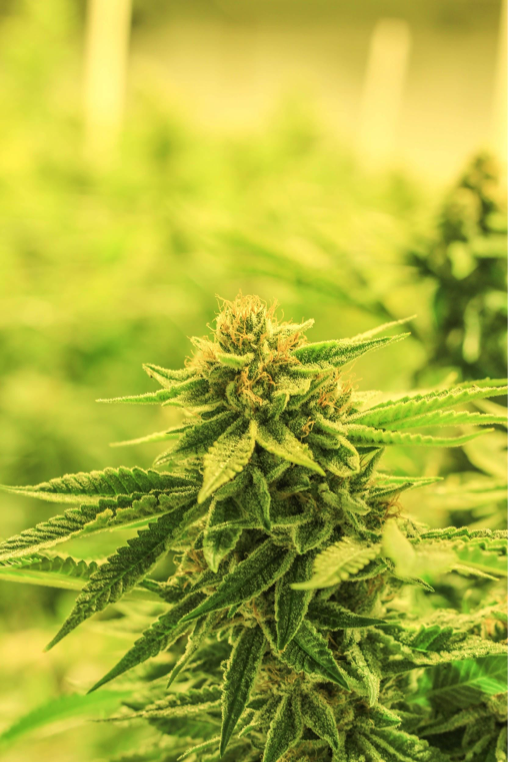
The DEA appeared to be on the verge of approving cannabis as a Schedule II drug – a move that would have drastically diminished the stigma and cannaphobia. What happened?
The Country was on the edge of its seat for cannabis rescheduling
Cannabis advocates, healthcare professionals, and patients were hopeful that the Drug Enforcement Agency (DEA) would announce that this ancient plant would finally be redefined as a Schedule II substance. Instead, the DEA opted not to give the official green light, resulting in continued waiting for those who could benefit from the medicinal properties of cannabis. For now, cannabis remains classified under the severe restrictions of a Schedule I drug.
In a 26-page letter from the DEA, officials stated that they “hope to release its determination in the first half of 2016.” Yet, as we waited with baited breath for the DEA to make this historical revision in cannabis classification, the change never came.
The Difference between Schedule I and Schedule II Drug Classification
The DEA drug classification system ranges from Schedule I to Schedule V. Schedule I drugs are considered to have no medicinal value and be the most lethal and threatening categories. In that category, cannabis keeps company with heroin, LSD, and peyote, while cocaine, methamphetamine, and oxycodone are classified as Schedule II drugs. Those who are convicted of trafficking any Schedule I drug are subject to the harshest punishments – a maximum fine between $1 million and $5 million and up to 20 years in prison.
What Experts Have to Say on the Scheduling
“Marijuana was scheduled among some of the most harmful and deleterious substances that affect the United States and its society,” says Robert Hoban, Holistic Cannabis Academy faculty and member of the Boulder, Colorado Marijuana Policy Advisory Committee and attorney with Hoban & Feola, one of the nation’s top cannabis law firms. “Today, marijuana is still defined as a schedule 1 controlled substance with no known medical uses despite the fact that a number of states have determined that cannabis does have medicinal properties that are far ranging.”
The Benefits of Cannabis Reclassification
Moving marijuana from Schedule I to Schedule II would normalize the culture surrounding cannabis. Reclassifying the herb would open doors for medical researchers to conduct more studies about the plant, in turn encouraging opportune ties to advance theories of its medicinal benefits.
Yet, in order for marijuana to make the shift to Schedule II, it has to go through a lengthy eight-step bureaucratic process.
- DEA makes a request for the Assistant Secretary of Health to reschedule the drug
- Assistant Secretary of Health (ASH) needs to recommend rescheduling
- Food and Drug Administration (FDA) approves the rescheduling
- Center for Drug Evaluation and Research (CDER) conducts a scientific review
- National Institute on Drug Abuse considers the recommendation and signs-off
- Back to the FDA and ASH for another sign-off
- DEA triples checks and the recommendation is officially published
- DEA releases a final notices on the scheduling action.
What Made the DEA to Stop Short?
Unfortunately, the FDA stopped the recommendation before it even got to the CDER. Claiming that cannabis has a “high potential for abuse” and that it “lacked accepted safety for use under medical supervision.”
Despite the volume in petitions to reclassify marijuana and the growing number of states across the US legalizing both medical and adult use cannabis, there’s no telling if the Federal government will reevaluate their stance.
New Information = Newfound Determination.
A recent poll from Gallup indicates that that 60 percent of Americans support legalizing cannabis – the highest level of support recorded in 47 years. Particularly interesting is that favoring cannabis legislation is up among all age groups. Based on 2015 estimates, cannabis law reform results may impact about 82 million Americans.
“When Gallup first asked this question in 1969, 12% of Americans supported the legalization of marijuana use. In the late 1970s, support rose to 28% but began to retreat in the 1980s during the era of the “Just Say No” to drugs campaign. Support stayed in the 25% range through 1995, but increased to 31% in 2000 and has continued climbing since then.”
Is This the End of Cannaphobia as We Know it?
Could it be that cannaphobia is mitigating across the country? Will this sentiment combined with state legalization for a possible total of 29 states with medical marijuana laws – either medical, adult, or both – finally incite Congress to deschedule cannabis?
Get Out the Vote + Help Change the World
Will you be doing your part to vote for progressive cannabis laws this year? We sure hope so. As an enlightened and enthusiastic supporter of the Holistic Cannabis Network and Holistic Cannabis Academy, we highly encourage you to join with us to keep the ground-swell of support for legalized cannabis moving in the right direction. Your vote will make a difference and every voice needs to be heard. Casting your vote to legalize and let’s end the cannaphobia once and for all.
Photo by jay stonne on Unsplash
